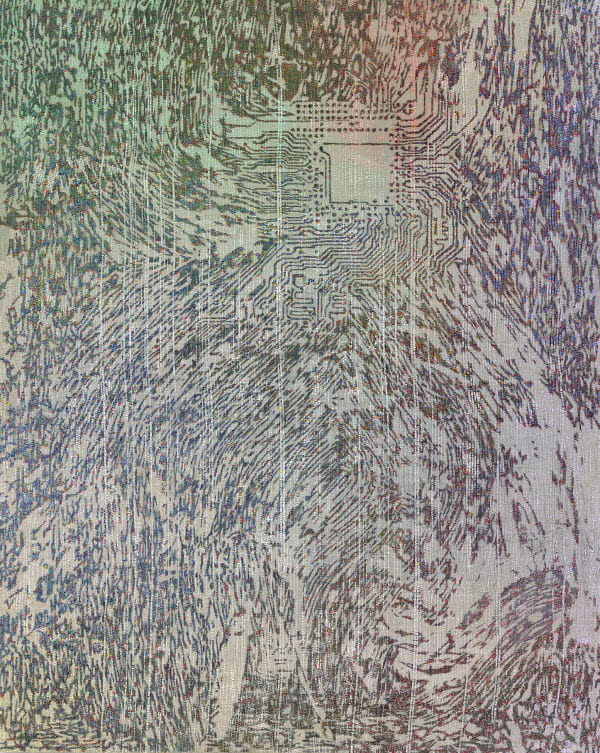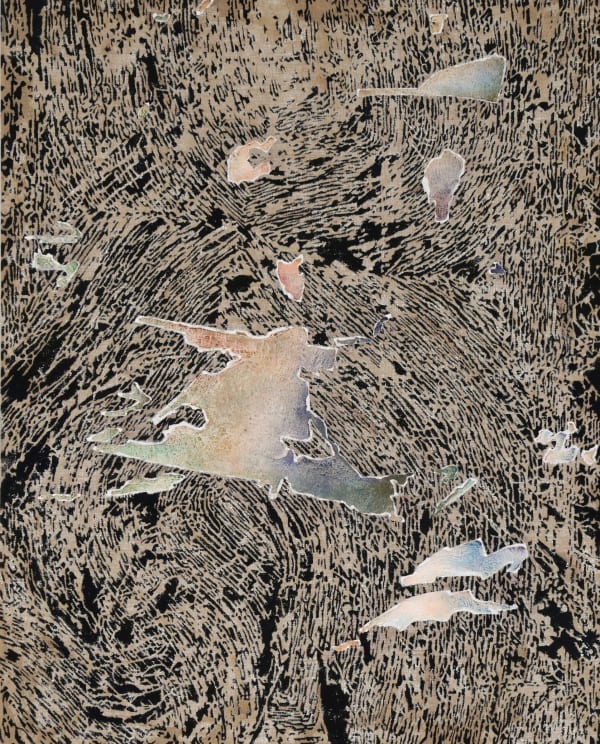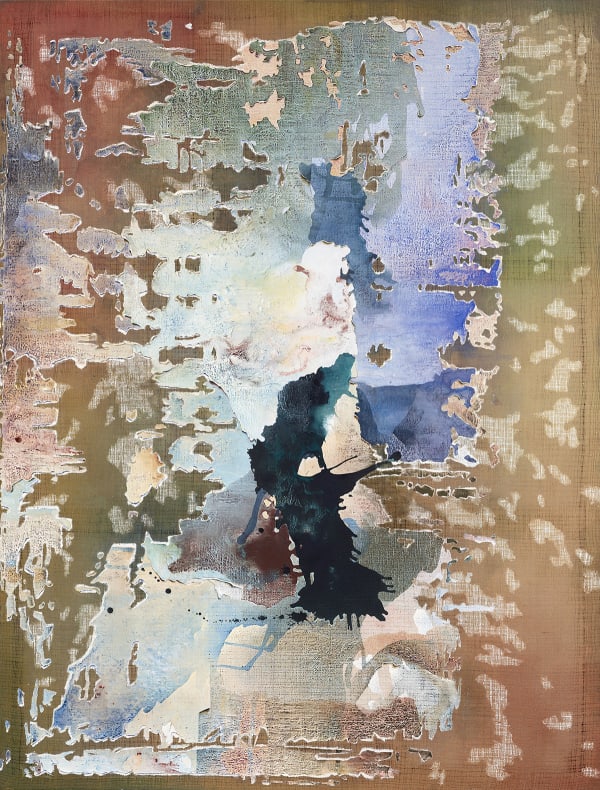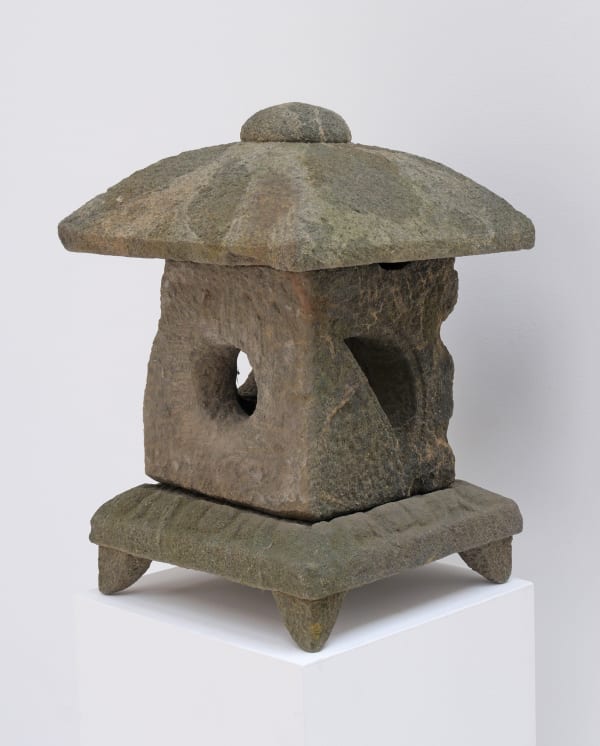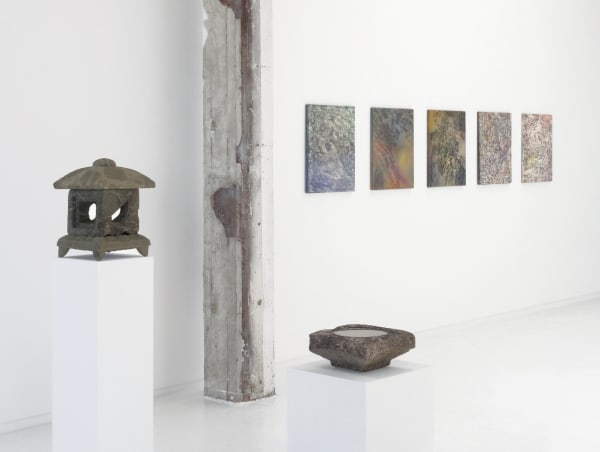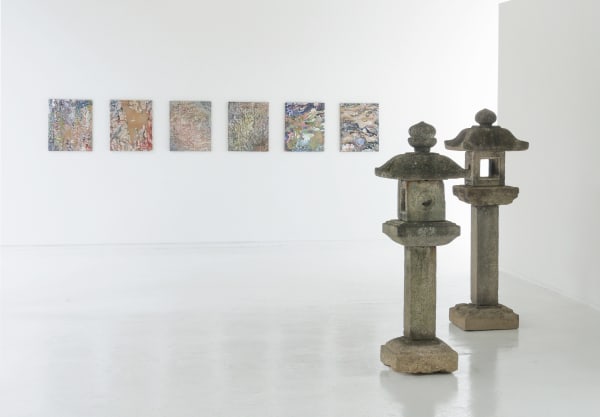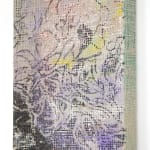Jutta Haeckel: Double Nature
Düsseldorf-based Jutta Haeckel may be the most original painter of her generation. Her recent paintings on jute—the strong, coarse, natural fiber that burlap is made of—utilize a series of unorthodox techniques to undermine the physical and conceptual precepts of painting.
For several years, Haeckel has been developing a technique that inverts traditional processes of depiction. Rather than painting a form, she paints the negative space around the form, confounding one's perception of foreground and background as well as the meaning of "subject." In her newest work, in addition to her already eccentric process, she applies pigments to the "backside" of the painting, then pushes paint through small gaps in the fabric-extruding it onto the "front" — further subverting the two-dimensional space of traditional painting.
Technically dichotomous-painted from both sides; seemingly gestural, yet quite controlled; at the same time abstract and representational; micro and macro-Haeckel's paintings are studies in ambiguity. Their Double Nature, she believes, is a reflection of the technological, scientific, social and cultural fluidity of our time.
Jutta Haeckel was born in Hannover, Germany in 1972. She studied at Hochschule für Künste, Bremen, under the tutelage of Karin Kneffel and at Goldsmiths College in London. She has exhibited widely in Germany, including recent exhibitions at the Kunstverein Leverkusen, the Kunsthalle in Recklinghausen and at Schloss Detmold. This is her sixth solo exhibition at Hosfelt Gallery. A recent catalogue can be purchased by contacting the gallery.
As a counterpoint to Haeckel's paintings, Hosfelt Gallery will exhibit a group of antique stone objects from the temple gardens of Kyoto. While Haeckel's paintings can be said to be about flux, the basins, pagodas, lanterns and foundation stones—some dating as early as the Kamakura Period (1185 - 1300)—exude serenity and solidity. These stone objects are shown in association with Mitsui Fine Arts (mitsuifinearts.com).
-
 Jutta HaeckelForce of Nature I, 2019acrylic and acrylic paste on jute59 1/8 x 47 1/4 inches/150 x 120 cm
Jutta HaeckelForce of Nature I, 2019acrylic and acrylic paste on jute59 1/8 x 47 1/4 inches/150 x 120 cm -
 Jutta HaeckelForce of Nature III, 2019acrylic and acrylic paste on jute59 1/8 x 47 1/4 in
Jutta HaeckelForce of Nature III, 2019acrylic and acrylic paste on jute59 1/8 x 47 1/4 in
150.2 x 120 cm -

-
 Jutta HaeckelGlacier, 2018acrylic and acrylic paste on jute92 1/2 x 70 7/8 inches/235 x 180 cm
Jutta HaeckelGlacier, 2018acrylic and acrylic paste on jute92 1/2 x 70 7/8 inches/235 x 180 cm -
 Jutta HaeckelTorn, 2018acrylic and acrylic paste on jute39 3/8 x 31 1/2 inches/100 x 80 cm
Jutta HaeckelTorn, 2018acrylic and acrylic paste on jute39 3/8 x 31 1/2 inches/100 x 80 cm -
 Jutta HaeckelFragments, 2018acrylic and acrylic paste on jute39 3/8 x 31 1/2 inches/100 x 80 cm
Jutta HaeckelFragments, 2018acrylic and acrylic paste on jute39 3/8 x 31 1/2 inches/100 x 80 cm -

-

-
 AnonymousNishinoya-style Lantern, Edo Period, 1603-1868Shirakawa stone62 1/2 x 21 x 20 3/4 inches
AnonymousNishinoya-style Lantern, Edo Period, 1603-1868Shirakawa stone62 1/2 x 21 x 20 3/4 inches
158.8 x 53.3 x 52.7 cm -
 AnonymousTsukubai (water basin), Kamakura Period, 1185-1300Shirakawa stone, carved from a suirin (the sphere portion) of an earlier gorinto12 1/2 x 14 1/4 x 14 1/4 inches
AnonymousTsukubai (water basin), Kamakura Period, 1185-1300Shirakawa stone, carved from a suirin (the sphere portion) of an earlier gorinto12 1/2 x 14 1/4 x 14 1/4 inches
31.8 x 36.2 x 36.2 cm -

-
 AnonymousHokyointo, 1522, dated 2nd year of Daiei Era (1521-1528)Shuzan-Kitayama stone38 x 18 x 17 1/2 inches
AnonymousHokyointo, 1522, dated 2nd year of Daiei Era (1521-1528)Shuzan-Kitayama stone38 x 18 x 17 1/2 inches
96.5 x 45.7 x 44.5 cm -
 AnonymousYose-Oki Lantern, Edo Period, 1603-1868stone16 x 22 x 15 inches
AnonymousYose-Oki Lantern, Edo Period, 1603-1868stone16 x 22 x 15 inches
40.6 x 55.9 x 38.1 cm


